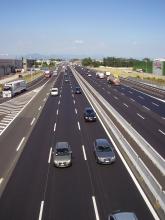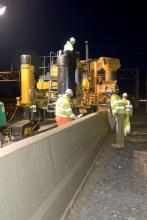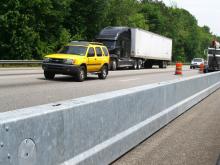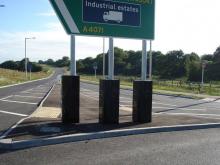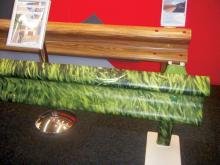Tata Construction Products is a major player in the European road protection market and aims to boost its share of business - Mike Woof writes. Part of the massive Tata Group, Tata Construction Products is a major player in Europe’s business segment for steel guard rails. Rodney Rice, marketing manager, Tata Steel Construction Products, said, “Our market is predominantly Europe.”
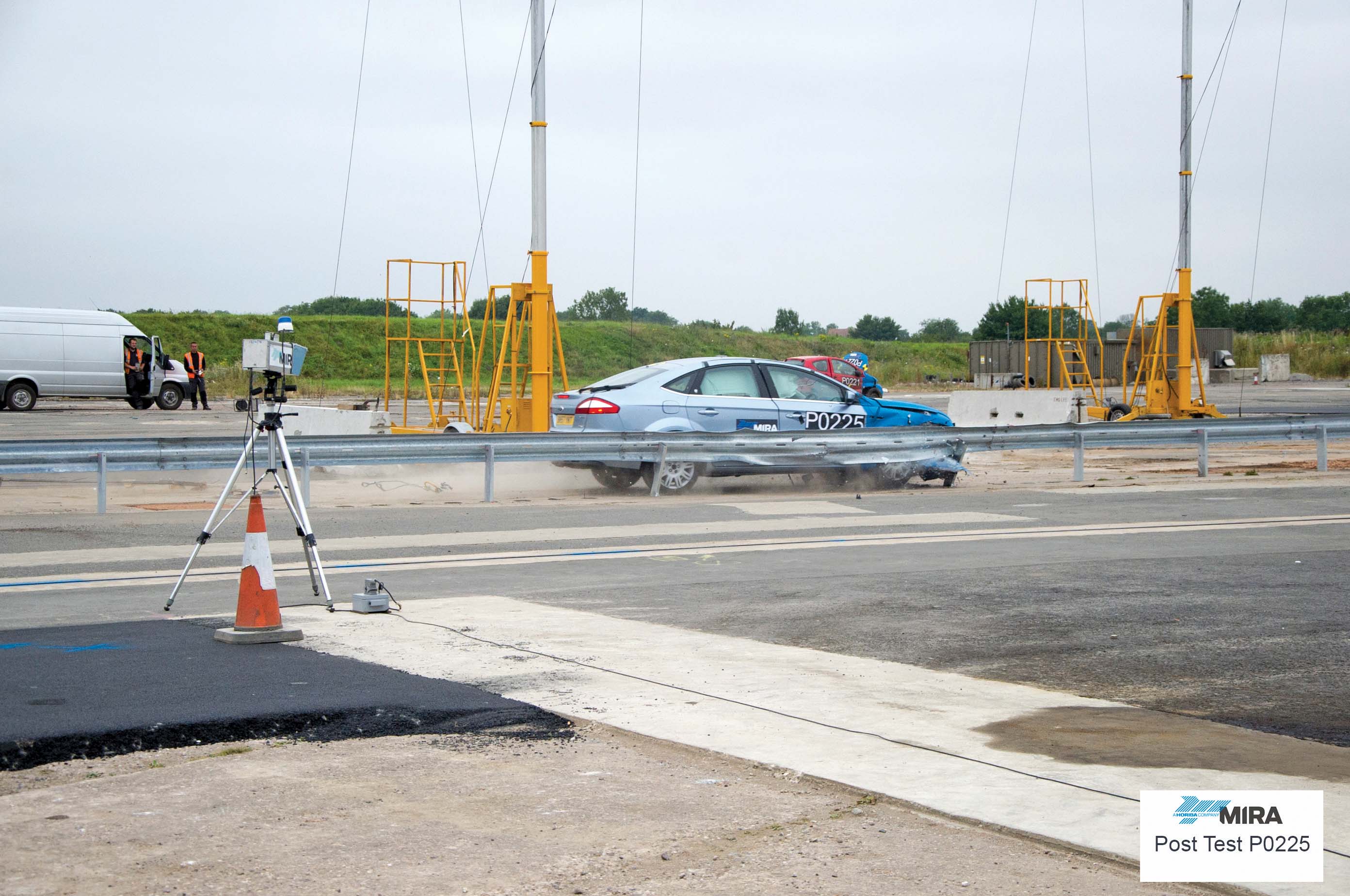
Modelling barrier performance more accurately ensures that actual tests provide predicted results
Tata Construction Products is a major player in the European road protection market and aims to boost its share of business - Mike Woof writes
Part of the massive Tata Group, Tata Construction Products is a major player in Europe’s business segment for steel guard rails. Rodney Rice, marketing manager,2657 Tata Steel Construction Products, said, “Our market is predominantly Europe.”
The Tata Steel business in Europe produces a high volume of steel used in the automotive as well as the construction equipment industry. Meanwhile Tata Steel Construction Products adds value to its steel output by manufacturing products such as guard rail at the firm’s vast facility in Newport, South Wales. Rice said, “We’re supplying a complete system that comprises the steel guard rail and the nuts and bolts that hold it together.”
Tata Steel Construction Products offers two guard rail product ranges, the Vertex and Protect 365 systems, both of which are designed to meet the European EN1317 requirements. These are widely used throughout the UK, with the firm producing the units at the Newport facility to meet customer demand.
The guard rail units are produced in 5m galvanised beam sections that weigh 57kg and are formed and cut to length with all the necessary holes for fixing and mounting pre-drilled. The 3mm thick steel sections feature a thick galvanising layer designed to withstand the effects of road salt over a long period, offering a design life of 20 years. For guard rail components fitted in some locations, such as under bridges, the effects of road salt can be more concentrated as there is no rain to wash away this corrosive material, so increased galvanisation is of greater importance for the products to meet working life requirements.
The firm uses CAD technology to design and develop its barrier products and has a sophisticated modelling capability. Rice explained, “It actually comes because of our automotive business.”
Because of the firm’s previous links with MG Rover (and now Jaguar Landrover), it has used expertise developed to model the behaviour of cars during crashes and turned this around to also model barrier performance during crash impacts. This has been developed over a 20-year period and through the firm’s links with MG Rover, it also had a ready supply of development vehicles for use in actual crash testing. However, as Trevor Mustard, technical manager, Tata Construction Products pointed out, there are some key differences in the way in which barrier products and the passenger cars are developed. In the automobile sector, reducing weight is a key priority whereas for the guard rail market, this is not as important.
Having access to the impact modelling used in the development of the Rover 75 car, for example, gave Tata a very sophisticated tool for barrier modelling. This allowed Tata to model how the vehicle suspension behaves in a crash, which has a major bearing on what happens to the impact loads and how they are transferred. Mustard said, “The old models were not representative of how a vehicle’s suspension and steering worked. When we get to a crash test, we’re pretty sure what is going to happen.”
Using this information gave Tata the ability to model the barrier performance far more accurately so that when it came to actual crash testing, the success rate was significantly higher. Mustard commented, “Trying to work out what forces are where is very difficult.”
Improved design also means that modern cars behave differently in crashes than older vehicles. Newer cars are designed with airbags to protect passengers, with structures that are more rigid than earlier generation vehicles that were more reliant on crumple zones. Mustard said, “The structure of the modern vehicle puts more load on the barrier than an older vehicle. I reckon a modern car puts 20% more energy into the barrier.”
However, the EN1317 specifications still relate to the older car designs. The4013 Suzuki Swift was commonly used for the 900kg vehicle tests in Europe, but this has been replaced more recently by the 2728 Toyota Aygo. Meanwhile for the 1.5tonne car tests, the Rover 75 was favoured in the UK but as it is an old model, it has been replaced by the 3423 Ford Mondeo.
There is discussion within Europe over the weight categories of cars currently being tested. The standard tests are for vehicles weighing 900kg and 1.5tonnes, vehicles that are becoming less common on Europe’s roads. Cars have increased incrementally in weight so as to offer the necessary crash protection now required by safety standards. With passengers and baggage on-board, a common family saloon car can easily tip the scales at 1.8tonnes. Mustard said, “We’ve had lots of debates about whether to have a 2.5tonne car as well. In the US they test a 2.5tonne pick-up truck, but that’s not a common car in the UK.”
Vehicle design is also different in the US, with many pick-up trucks still featuring a separate chassis, a design that is now unusual with the unit construction SUVs of similar weight used on European roads.
But even within Europe, variations in the age of vehicles in some countries as well as the ways in which they are used, means that establishing a common set of standards is difficult. Vehicles tend to be older in Eastern European countries while in France or Germany, distances travelled are often greater and at higher average speed than in other parts of the EU. Mustard commented, “It is a bit of a mess trying to find a standard.” There are some standards also that Mustard believes need updating, with the EN1317 H2 rating in particular being increasingly impractical. The H2 rating is for a 13tonne bus, a vehicle category that is becoming rarer on Europe’s roads as vehicle weights increase. Moreover, tests are typically carried out with urban buses that have comparatively low centre of gravity, rather than the heavier coaches with the raised passenger area and lower luggage storage now more common in Europe. Tata Steel Construction Products does now offer an H2 rated system, but introduced this mainly to be able to compete in some tenders, while preferring to explain to customers why other barrier types may be more suitable for specific applications.
There are other disagreements too within Europe with regard to some technical areas and these have had an effect on the approvals process. Most notable among this has been the approval process for guard rails that are safer for motorcyclists. In Italy and Spain, there are products developed to protect motorcyclists in the event of a crash, preventing a fallen rider from hitting the supports of a guard rail system.
Mustard explained that moves to introduce the Italian and Spanish concept across Europe were blocked, however, with German experts saying that there was no provision in this system for protecting a fallen rider from the top edge of the guard rail. There was also comment that all the tests carried out to simulate the effect of a fallen rider impacting against the supports were carried out on straight sections, whereas these products are typically installed on curves.
And he added that the presence of a lower guard rail means that the whole system should be tested fully with impacting cars again, as its performance may vary from the original design.
Within Europe there are further issues with regard to barriers also. Some countries have used products from different suppliers over time, so that highway authorities may be unsure as to what generation of guard rail systems are fitted alongside roads. This means that certain stretches of road may no longer be compliant and also causes some confusion when it comes to replacement of old guard rail sections. Meanwhile, even for some comparatively new bridges, the H2 rated guard rails have been installed, although the more protective H4 systems would be more appropriate according to Tata.
Looking ahead, Tata Steel Construction Products has a strong market in the UK for its guard rail and with much of the network needing updating, sales will be healthy for many years to come. Looking across Europe, however, there are clearly question that need to be answered with regard to updating standards and also ensuring that approval processes are more unified than at present.
Part of the massive Tata Group, Tata Construction Products is a major player in Europe’s business segment for steel guard rails. Rodney Rice, marketing manager,
The Tata Steel business in Europe produces a high volume of steel used in the automotive as well as the construction equipment industry. Meanwhile Tata Steel Construction Products adds value to its steel output by manufacturing products such as guard rail at the firm’s vast facility in Newport, South Wales. Rice said, “We’re supplying a complete system that comprises the steel guard rail and the nuts and bolts that hold it together.”
Tata Steel Construction Products offers two guard rail product ranges, the Vertex and Protect 365 systems, both of which are designed to meet the European EN1317 requirements. These are widely used throughout the UK, with the firm producing the units at the Newport facility to meet customer demand.
The guard rail units are produced in 5m galvanised beam sections that weigh 57kg and are formed and cut to length with all the necessary holes for fixing and mounting pre-drilled. The 3mm thick steel sections feature a thick galvanising layer designed to withstand the effects of road salt over a long period, offering a design life of 20 years. For guard rail components fitted in some locations, such as under bridges, the effects of road salt can be more concentrated as there is no rain to wash away this corrosive material, so increased galvanisation is of greater importance for the products to meet working life requirements.
The firm uses CAD technology to design and develop its barrier products and has a sophisticated modelling capability. Rice explained, “It actually comes because of our automotive business.”
Because of the firm’s previous links with MG Rover (and now Jaguar Landrover), it has used expertise developed to model the behaviour of cars during crashes and turned this around to also model barrier performance during crash impacts. This has been developed over a 20-year period and through the firm’s links with MG Rover, it also had a ready supply of development vehicles for use in actual crash testing. However, as Trevor Mustard, technical manager, Tata Construction Products pointed out, there are some key differences in the way in which barrier products and the passenger cars are developed. In the automobile sector, reducing weight is a key priority whereas for the guard rail market, this is not as important.
Having access to the impact modelling used in the development of the Rover 75 car, for example, gave Tata a very sophisticated tool for barrier modelling. This allowed Tata to model how the vehicle suspension behaves in a crash, which has a major bearing on what happens to the impact loads and how they are transferred. Mustard said, “The old models were not representative of how a vehicle’s suspension and steering worked. When we get to a crash test, we’re pretty sure what is going to happen.”
Using this information gave Tata the ability to model the barrier performance far more accurately so that when it came to actual crash testing, the success rate was significantly higher. Mustard commented, “Trying to work out what forces are where is very difficult.”
Improved design also means that modern cars behave differently in crashes than older vehicles. Newer cars are designed with airbags to protect passengers, with structures that are more rigid than earlier generation vehicles that were more reliant on crumple zones. Mustard said, “The structure of the modern vehicle puts more load on the barrier than an older vehicle. I reckon a modern car puts 20% more energy into the barrier.”
However, the EN1317 specifications still relate to the older car designs. The
There is discussion within Europe over the weight categories of cars currently being tested. The standard tests are for vehicles weighing 900kg and 1.5tonnes, vehicles that are becoming less common on Europe’s roads. Cars have increased incrementally in weight so as to offer the necessary crash protection now required by safety standards. With passengers and baggage on-board, a common family saloon car can easily tip the scales at 1.8tonnes. Mustard said, “We’ve had lots of debates about whether to have a 2.5tonne car as well. In the US they test a 2.5tonne pick-up truck, but that’s not a common car in the UK.”
Vehicle design is also different in the US, with many pick-up trucks still featuring a separate chassis, a design that is now unusual with the unit construction SUVs of similar weight used on European roads.
But even within Europe, variations in the age of vehicles in some countries as well as the ways in which they are used, means that establishing a common set of standards is difficult. Vehicles tend to be older in Eastern European countries while in France or Germany, distances travelled are often greater and at higher average speed than in other parts of the EU. Mustard commented, “It is a bit of a mess trying to find a standard.” There are some standards also that Mustard believes need updating, with the EN1317 H2 rating in particular being increasingly impractical. The H2 rating is for a 13tonne bus, a vehicle category that is becoming rarer on Europe’s roads as vehicle weights increase. Moreover, tests are typically carried out with urban buses that have comparatively low centre of gravity, rather than the heavier coaches with the raised passenger area and lower luggage storage now more common in Europe. Tata Steel Construction Products does now offer an H2 rated system, but introduced this mainly to be able to compete in some tenders, while preferring to explain to customers why other barrier types may be more suitable for specific applications.
There are other disagreements too within Europe with regard to some technical areas and these have had an effect on the approvals process. Most notable among this has been the approval process for guard rails that are safer for motorcyclists. In Italy and Spain, there are products developed to protect motorcyclists in the event of a crash, preventing a fallen rider from hitting the supports of a guard rail system.
Mustard explained that moves to introduce the Italian and Spanish concept across Europe were blocked, however, with German experts saying that there was no provision in this system for protecting a fallen rider from the top edge of the guard rail. There was also comment that all the tests carried out to simulate the effect of a fallen rider impacting against the supports were carried out on straight sections, whereas these products are typically installed on curves.
And he added that the presence of a lower guard rail means that the whole system should be tested fully with impacting cars again, as its performance may vary from the original design.
Within Europe there are further issues with regard to barriers also. Some countries have used products from different suppliers over time, so that highway authorities may be unsure as to what generation of guard rail systems are fitted alongside roads. This means that certain stretches of road may no longer be compliant and also causes some confusion when it comes to replacement of old guard rail sections. Meanwhile, even for some comparatively new bridges, the H2 rated guard rails have been installed, although the more protective H4 systems would be more appropriate according to Tata.
Looking ahead, Tata Steel Construction Products has a strong market in the UK for its guard rail and with much of the network needing updating, sales will be healthy for many years to come. Looking across Europe, however, there are clearly question that need to be answered with regard to updating standards and also ensuring that approval processes are more unified than at present.

